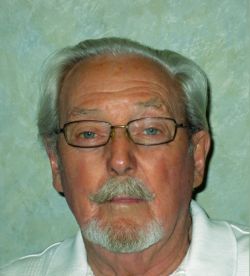Sports Cars and Tractors
By Geoff Wheatley
The Sports Car and a Tractor Engine...
The famous Ferguson Tractor had featured a Ford engine almost since its conception however, nothing lasts for ever as they say and for reasons that are not important and to be honest I don't know, Ford and Ferguson parted company in 1945. Sir john Black, the Chairman and CEO of the Standard Motor Company who also owned Triumph Motors through a bankruptcy purchase, arranged a meeting with the Ferguson Company and suggested that Standard develop a special engine for their new post war tractor. Standard supplied engines to several UK Motor Manufacturers and in company with Ford, Morris Motors and Austin, produced engines for 88 percent of the British Motor industry. The policy was simple.
Standard would, by contract, design and manufacture the engines but always retained the copyright. One of their customers was Jaguar Motors who had used the Standard Motor company to make all of their engines since the conception of the breed in the early 1930's. (However this was to change just a couple of years after the Ferguson agreement when Jaguar created its own engine production facility that resulted in record breaking achievements in the post war years.)
The requirements for a tractor are not quite the same as the family transport vehicle that usually saw the light of day at the weekend when the family decided to go for a drive or visit the nearest shopping facility, or both, not forgetting the Sunday morning drive to the local church.
First it had to have power at low speeds, with the term low speeds being the most important feature. Very few tractors were ever designed to do much more than twenty five MPH but they had to be able to pull a weight ten to fifteen times their size and climb a hill at the same time! They needed to run at low gear speeds for various lengths of time yet not boil over. Another important requirement was easy simple service that any one with an average level of vehicle knowledge could provide. In short quite the reverse from the average performance sports car that's only requirement was to go fast, and then faster.
The engineers at Standard were not excited by the opportunity to design a tractor engine but if you wanted to keep your job you agreed with the boss. Sir John Black, who apart from being the Chairman, and CEO was also the head of the design team, the company accountant, sales director and most of the other positions within the organization. This is not to say that these positions were not filled by professional people but Sir John's word was the final comment on any subject. A good example of this was the Post War Triumph 1800 with which Black had intended to challenge the Post War Sports Car Market.
The 1800 featured a rumble seat, something that had not been seen on a British car since the 1930's. However, Sir John liked the idea of this feature and that was that! When shown at the annual Motor Show in London half the audience had no idea what this item was!
I once owned a Triumph 1800 that might hit 70 with a tail wind. The rear open seat was not a feature I would recommend unless you were twelve years old; it was difficult to get into and almost impossible to get out of unless you could persuade some well built healthy individual to help you get your feet back on the ground.. My wife tried it once and that was the end of that adventure.
Black also insisted that In order to appeal to the American market the gear change was part of the steering column and the seats were full bench type, not quite my idea of a sports car interior. Needless to say the Triumph 1800 was not an outstanding success even when they increased the engine size to two litres. During the production period of three and a half years Triumph sold a total of 2,502 such cars, not quite a sales record. None of these were sold in the USA which I guess, looking back, makes a lot of sense! Triumph who in its heyday was a leading luxury sports car was now virtually forgotten.
Sir John had retired and the shareholders voted a new, young board of designers and engineers in the hope of regaining a working share of the British motor market. Not an easy task with MG catering for the inexpensive buyer while the new Jaguar 120 customers were enjoying a six months waiting list, if you were lucky!
There can be no doubt that the Triumph TR 2 that was featured at the Spring Motor show of 1954, saved the Triumph company. From that time forward Triumph was always a strong contender in the sports car field. However, its parent company Standard Motors, simply faded away, its last modest success being the Standard Vanguard in the mid 50's. Some found their way to the American market but were no match for the Post War American Dream Cars.
Geoff Wheatley



All Cars • • Racing • • VINTAGE • • Shows • • Gallerys • • Contact
